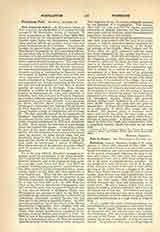

Fortescue, ADRIAN, BLESSED, Knight of St. John, martyr; b. about 1476, executed July 10, 1539. He belonged to the Salden branch of the great Devonshire family of Fortescue, and was a true country gentleman of the period, occasionally following the king in the wars with France (1513 and 1522), not unfrequently attending the court, and at other times acting as justice of the peace or commissioner for subsidies. He was knighted in 1503 (Clermont; but D. N. B. gives 1528), attended the Field of the Cloth of Gold (1520), and late in life (1532) became a Knight of St. John. When Anne Boleyn became queen, Sir Adrian (whose mother, Alice Boleyn, was Anne’s grandaunt) naturally profited to some extent but, as we see from his papers, not very much. The foundations of his worldly fortunes had been laid honorably at an earlier date. He was a serious thrifty man, pains-taking in business, careful in accounts, and a lover of the homely wit of that day. He collected and signed several lists of proverbs and wise saws, which, though not very brilliant, are never offensive or coarse, always sane, and sometimes rise to a high moral or religious level.
All of a sudden this quiet, worthy gentleman was overwhelmed by some unexplained whim of the Tudor tyrant. On August 29, 1534, he was put under arrest, no one knows why, but released after some months. On February 3, 1539, he was arrested a second time and sent to the Tower. In April he was condemned untried by an act of attainder; in July he was beheaded.
The same attainder, however, went on to lecree death against Cardinal Pole and several others Jecause they “adhered themselves to the Bishop of Rome“. Catholic tradition has always held that Sir Adrian died for the same cause, and modern Protestant critics have come to the same conclusion. His;ultus has always flourished among the Knights of St. John, and he was beatified by Leo XIII in 1895.
J. H. POLLEN

